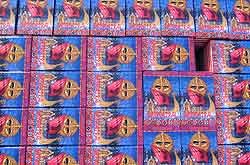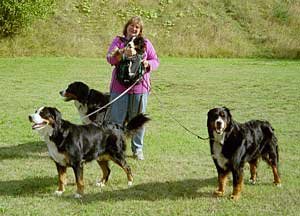How to write a book
The most frequent question that Kim gets when she's out lecturing, in letters and in e-mails is: "How do I write a book?"
Below Kim gives you a few simple tips on writing a book/story.
Here we have gathered Frequently Asked Questions and Kim's replies.
(On the Swedish site "Unga fakta" she answers young people's different questions.)
Before you start writing your story
First you get a "Post-it"-pad (one of those little yellow/pink/grey sticky note pads). When an idea pops up, write it down on the paper. Next idea – next paper. Then gather them all either on a wall or in a book. (A wall is best, there you can look at your little papers all the time). Read through the notes when you think you have enough ideas. See if you have found ideas for a good beginning, a good ending, enough chapters etc. If you can't find an ending, try to figure one out. Otherwise you might risk getting stuck when you get there, not knowing what to write. Don't write too much on your sticky papers – you don't want a full chapter there, just hints for chapters. When you see and read the notes on the wall, new ideas might come up, or if you see a note that doesn't fit in, you can just add to it or simply remove it. It must feel right! Don't be afraid to alter or cut out pieces in your story even when you think it's finished.
When you start writing your story
Picture yourself the person you want to write about, try to be that person, feel what she/he feels, see what that person sees and write everything down.
Don't use an eraser and never mind the spelling when you start. Write from your heart and let your fantasy flow.
Write as much as you can when you start. Follow "the thread" and stick to something important to hold the story together. (Here you use the things written on your sticky papers.)
Not until you feel the story is ready you may start thinking about the spelling. Remember: you can alter the story, add to it or cut out pieces until you feel it is completely finished.
It's not important to concentrate on the language when you sketch your story. You can polish the text later when the story is ready.
Don't forget to describe where the persons are, what is happening around them – are there more people around? – what they do when they talk. In other words: remember that a dialogue is not enough!
Finishing your story
It's a good idea to let someone you trust read what you have written. This someone must not be afraid to criticise you and honestly say what they think. Sometimes it's difficult to see faults in your own writing. The story might seem complicated and mixed up and even hard to understand. This is what you need your friend to discover!
Good luck with your writing!







